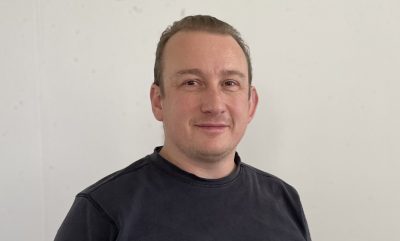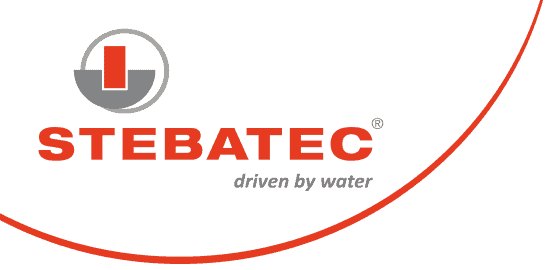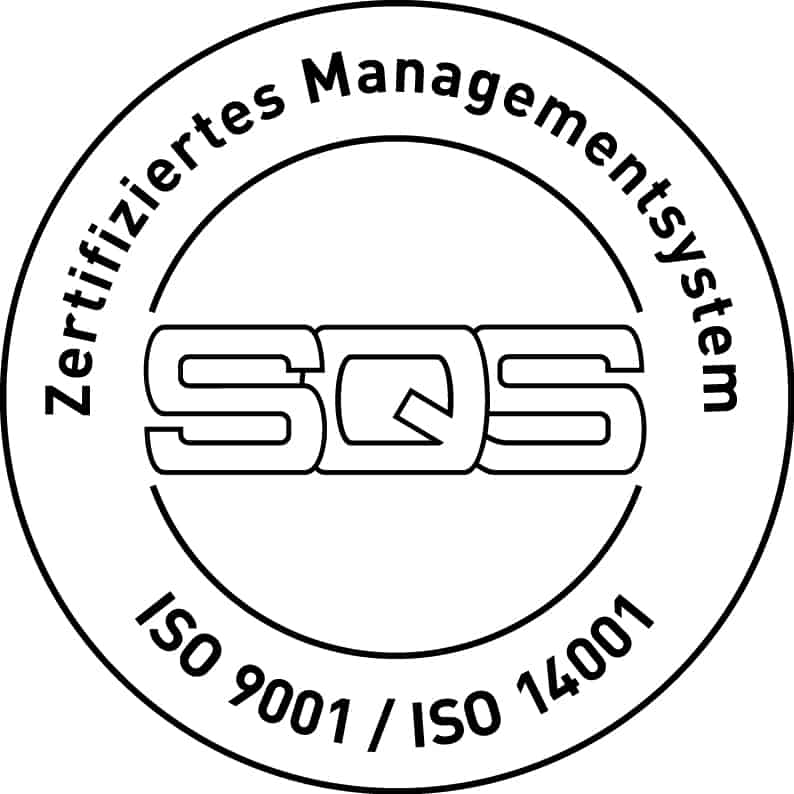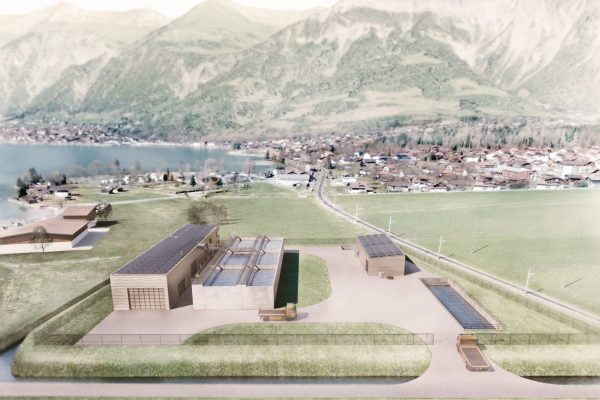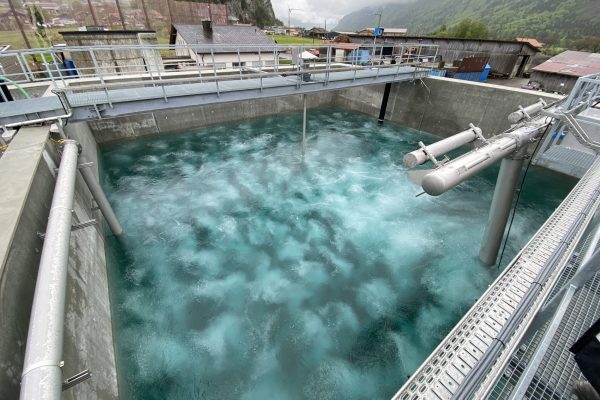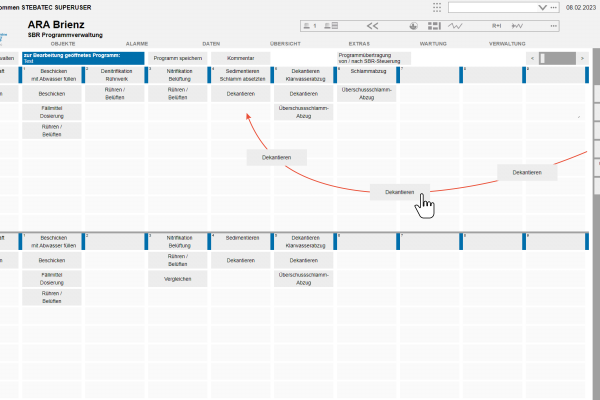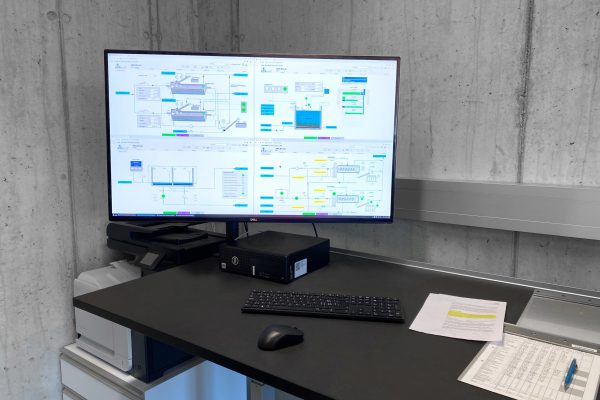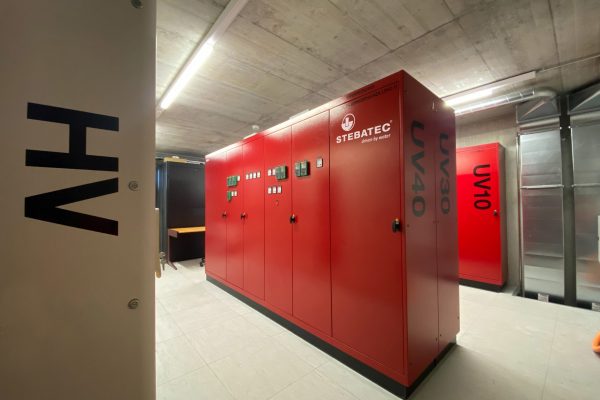Introduction
Process control systems (PCS) have undergone repeated transformations in recent years. This is mainly due to technological developments, because these drive the degree of automation and thus support the effectiveness of a plant.
The complexity and scope of automation are also constantly increasing, and it is precisely here that a modern and future-oriented process control system must be available so that the potential of the plant to be operated can be fully exploited.
A modern PCS becomes the control centre, is accessible in many ways, gives the operator freedom, increases productivity, is intuitive, attractive and should grow continuously with the requirements.
Quality and efficiency improvement
A modern PCS is characterised above all by the fact that the user is provided with the necessary tools, but is not dictated how the processes are to be designed. The PCS from STEBATEC is characterised precisely by these quality features and thus makes a significant contribution to ensuring that the plant can be operated optimally and with increased efficiency, self-explanatory and without restrictions.
Our PCS is an open and modular software which is individually tailored to each customer. We adapt to the customer’s needs and thus offer him an open and flexible system that places the competence over the entire plant process in his hands – control technology from STEBATEC is characterised by its openness to interfaces and complete programming, which does not restrict the user in terms of options, yet impresses with its simplicity.
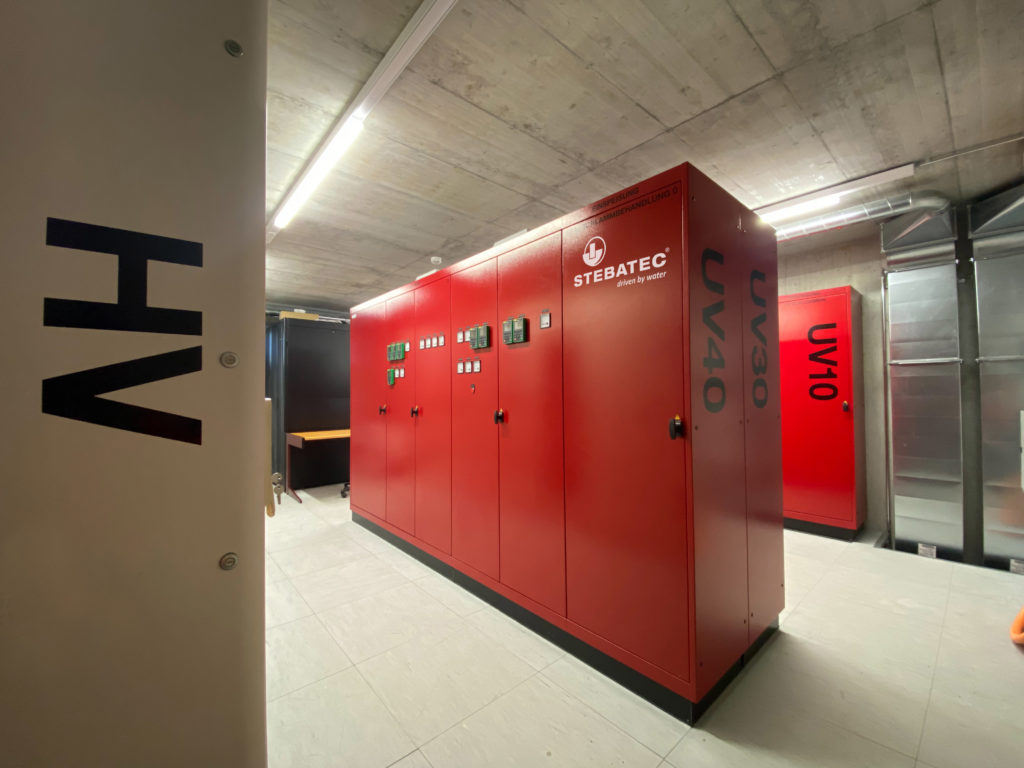
Building control technology and process control technology combined. State-of-the-art switchgear with 100% degree of automation in one system.
Comprehensive service is just as much a matter of course for us as training and support for the customer during the entire project and service life of the system. Depending on the progress of the project, or even during the active utilisation phase, we ensure together with the customer that the employees receive the appropriate training and further education.
Depending on the service level agreement, we are available to our customers 24 hours a day, 365 days a year.
Unique overview
Thanks to the vectorised PCS images, they can be displayed “lossless zoomable” on any device. The PCS is easily operated via common web browsers and this is also possible in several browser windows open in parallel on an unlimited number of screens. Whether on PC operating stations, touch panels or mobile devices, your eye is always focused on the relevant data.
Furthermore, the display area can be split and thus any number of PCS tiles can be displayed per screen. An advantage that can be “seen”, because this way you always keep the overview even in less comfortable space conditions, where several screens cannot be set up.
Thanks to the latest development, the user can select elements by drag & drop and display them directly as a chart in another browser window. This is a matter of course in “normal” software today, but in web-based software it is a leading technology.
Dynamic SBR as configured recipe
SBR stands for Sequencing Batch Reactor. This type of wastewater treatment is already used in numerous WWTPs in Switzerland. STEBATEC was able to supply the innovative customer, WWTP Brienz, with control and process control technology. Already in the planning phase, the need for dynamic control came to the fore. A static control programme that adheres to a few adjustable parameters was not what the customer wanted. Rather, the need was expressed to be able to freely compose the “recipes” of the treatment itself.
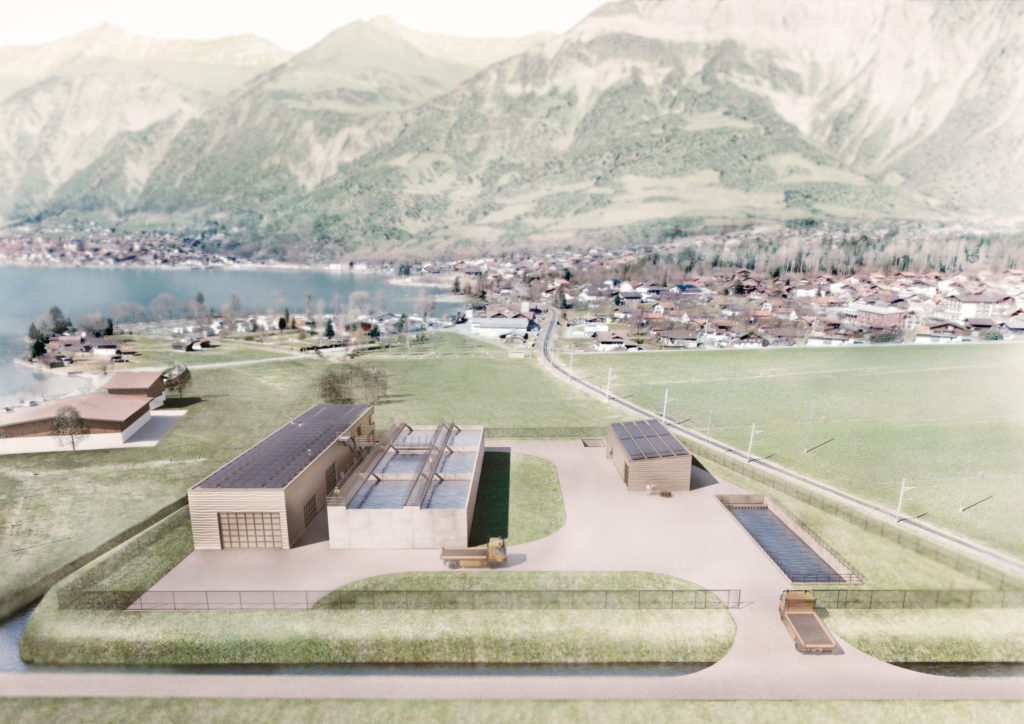
The new WWTP Brienz – high-tech wastewater treatment plant that defines new standards
The advantage of the SBR technology is that with the corresponding PCS and the associated control functions, the reactors can be operated in an optimised way depending on tourists and weather conditions. With the new PCS, different “recipes” for the operation of the reactors can now be prepared and stored on the PLC. On the control unit itself, there is a dry-weather recipe and a wet-weather recipe, so that these function independently of the PCS for safety reasons.
All operating modes can be freely parameterised among each other and their sequence freely defined. This gives the operator a lot of freedom, but conversely also requires the necessary expertise.
This dynamic design of the cleaning programmes ensures that the residence time of the medium in the reactors is always kept optimal and that more wastewater can be cleaned, especially during the tourist season and during rainy weather periods, than if the programme steps and sequence are predefined with a fixed time and sequence.
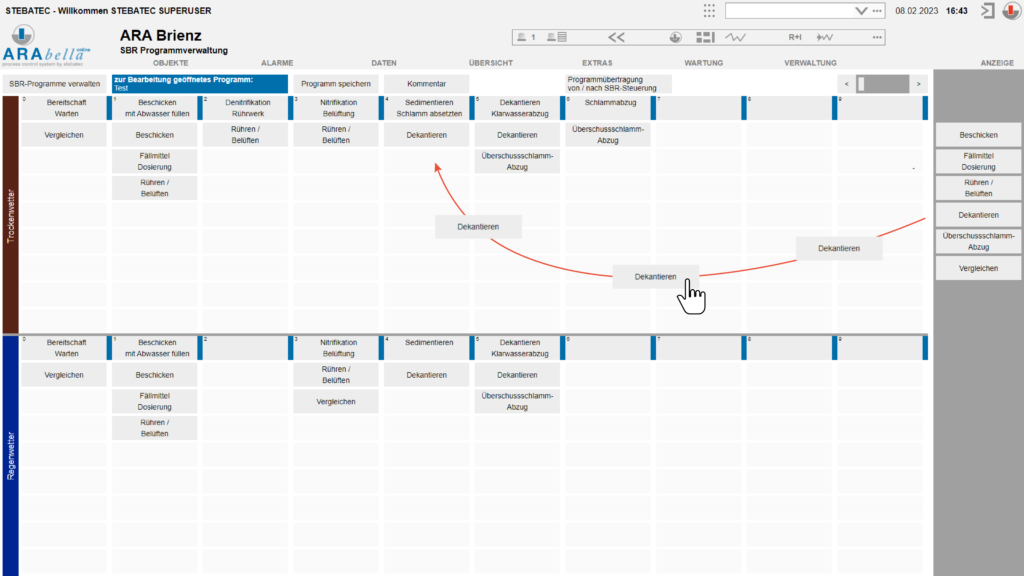
The configuration of the SBR reactors via drag & drop offers the operator flexibility and plant sovereignty. The red arrow shows how the function modules are integrated into the process and how the “recipe” is created. The current status of the individual process steps is visualised, providing a comprehensible overview.
A significant improvement has thus already been achieved in the phosphate precipitation process. Thanks to the flexible programme design, the consumption of ferric chloride (FeCl3) has dropped to a fraction of the previous amount (consumption at the old WWTP Brienz). In addition, 2/3 of the phosphorus is biodegraded. It is also possible to respond continuously to changing influences in the purification process, which enables the new WWTP Brienz to achieve optimal denitrification in the winter months.
The next expansion step will be the further networking of the external structures. The sewer network can be intelligently managed by means of measuring points and dynamically controlled structures. By means of inflow forecasts, the SBR system can also be ideally prepared for the upcoming weather conditions.
A standardisation of the systems, or at least a centralisation, is a great advantage for the customer in terms of maintenance and servicing.
At WWTP Brienz, the entire building technology and the fire alarm technology were integrated into the control system. Furthermore, great importance was attached to the alarm system being able to be integrated seamlessly into the system and to mutual control between the WWTP and its external buildings.
Operator comfort
An essential part of a PCS is the user interface. The simpler and more comprehensible the visualisation is presented and the user can identify with it, the more and more successfully he will use it. This in turn helps to ensure that the system is operated in the optimal range and safely. STEBATEC ensures that the ease of use is kept high through a comprehensible representation of the system and the corresponding tooltips.
The user interface, which was specially developed for the new WWTP Brienz, leaves nothing to be desired. The customer told us his requirements, which we implemented according to his ideas – which was possible with little effort thanks to the flexible module structure. The complex processes in the SBR reactors can now be displayed in the simplest way and adapted at any time. The input mask is based on a drag & drop system, which allows the customer to create the “recipes” absolutely freely and without specifications.
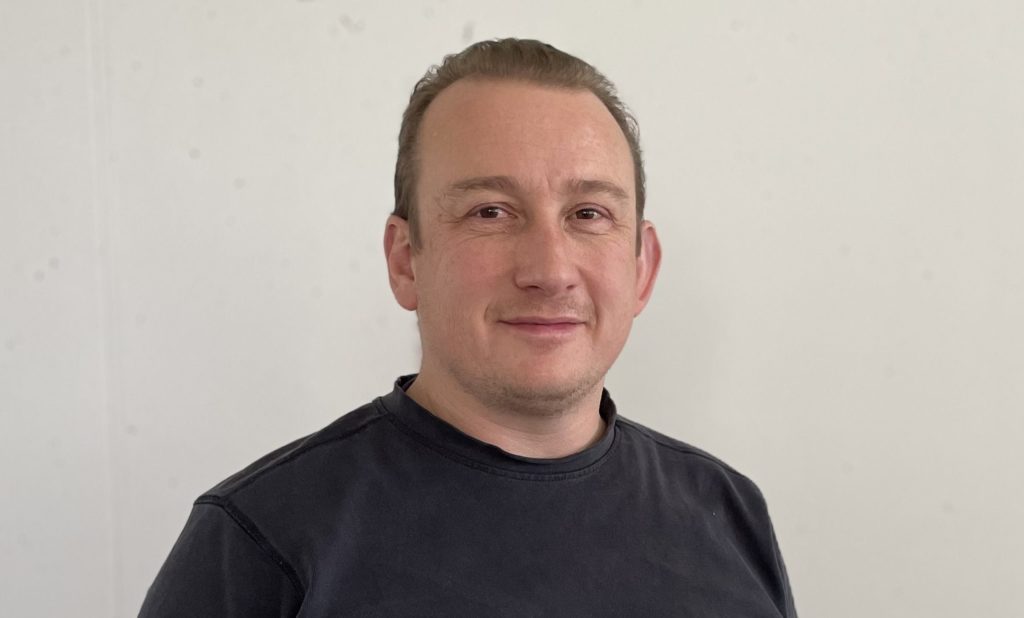
“We were looking for an automation company that does not subordinate our concerns but leaves the freedom of design to the customer – the PCS ARAbella from STEBATEC offers unrestricted access for process optimisation for operators who want it. Menu-driven and safe.”
Michael Baumann, WWTP Brienz wastewater treatment manager
Equally important is the networking of the PCS with a compatible alarm system such as the STEBalarm. The complete administration of the on-call organisation and alarm handling is conveniently integrated into the PCS and can be configured and operated via an interface.
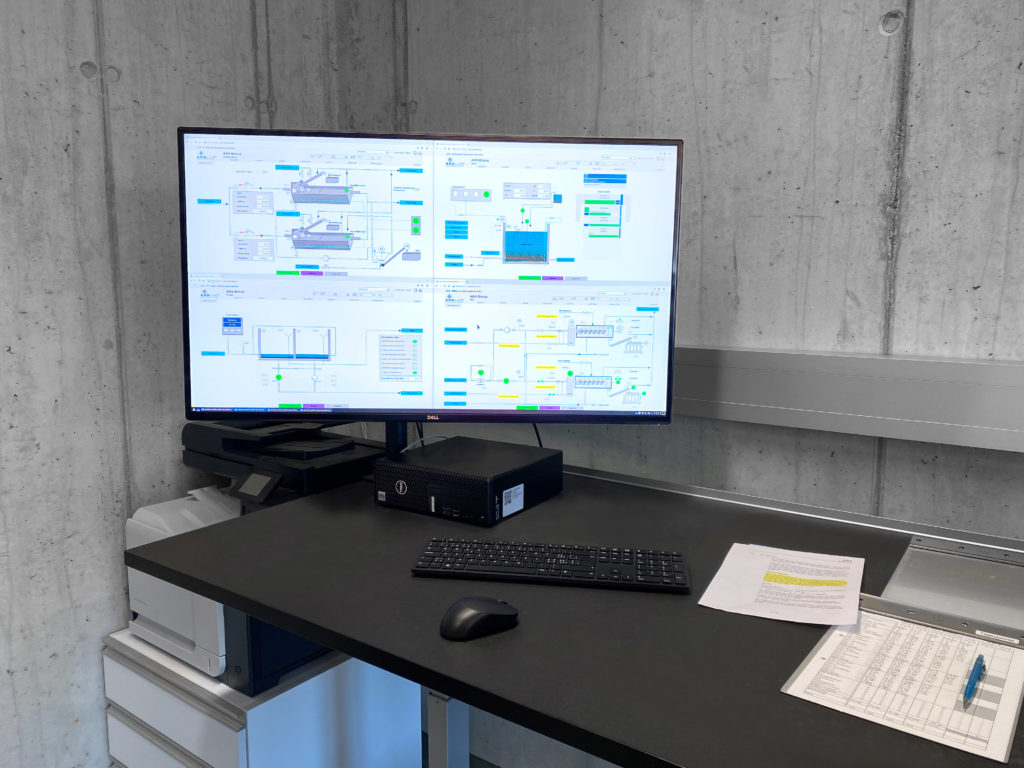
Operating station for the PCS ARAbella at WWTP Brienz, conveniently and clearly displayed on a screen. Thanks to the licence-free web technology, the customer has unlimited access to user stations throughout the site.
Data for the future
The PCS used by WWTP Brienz offers the customer extensive analysis options via graphics and stored data. The meter readings, measurement data and operating hours are clearly displayed and can be exported to Excel format at any time.
The operator can configure himself at which value change another data point is saved. The database is stored on the customer’s server and offers space for as long as the server capacity allows without restricting the speed. Unrestricted access to several decades of data is thus possible at any time.
The traceability through the historical data provides the operator with new possibilities to further optimise the future operation of the plant.
Finally, maintenance schedules can also be created via the existing operating hours counters of all aggregates in the PCS. Preventive maintenance can prevent a longer interruption of the processes.
Availability of redundant servers
One factor that should not be underestimated is the cost of the IT infrastructure and its maintenance. IT hardware must be regularly maintained and replaced in order not to risk system failures. Nevertheless, hardware maintenance is still inexpensive compared to a complete failure of a wastewater treatment plant.
In order not to endanger the operation of the sewage treatment plant, the server installations must always be carried out redundantly. With our web-based PCS, operation is ensured even if the entire Internet or mobile network is out of service, since the WWTP Brienz system is designed as an autonomous island operation. Of course, the PCS can be accessed via an internal WLAN with mobile input devices and their web browsers.
If operators explicitly wish, we can offer a cloud-based solution. In this solution, too, a completely redundant server infrastructure is available (on the provider side), but the customer must be aware that access to the PCS is no longer guaranteed in the event of a large-scale power or mobile network failure. Therefore, in these cases, we always apply an emergency level by means of a local touch control panel.
The STEBATEC licensing model is also very simple due to the browser-based solution.
The number of user terminals is not limited. There is also no need for any software to be installed on the operating stations, which simplifies the use of new PCs. For remote access, all that is needed is VPN access with two-stage authentication and a browser to access the control system from any device. This enables the customer to procure his hardware as he wishes.
STEBATEC also offers annual updates for the server installation with your system on request, which always keep the system up-to-date. In this way, the investment costs remain plannable and the customer does not have to deal with ageing software.
IT security (cyber security, servers, data protection, etc.)
The growing networking with information technology in almost all areas of life opens up many potentials that must be used to meet the increasing demands of society. However, digitalisation also brings with it new dangers that must be consistently combated. In particular, we are talking about targeted cyber attacks on the IT infrastructure. The wastewater and drinking water industry is not exempt from this and must become aware of these dangers. Operators of such critical infrastructures are required to implement the ICT minimum standard. (ICT Information and Communication Technology) The guidelines and tools for this are provided by the Federal Office for National Economic Supply (FONES).
The entire IT concept of a facility must be thought through from the very beginning. Every possible connection to the internal network must be planned and managed. Special attention must be paid to a redundant design of critical components.
For the analysis of the existing IT infrastructure and the implementation to comply with the ICT minimum standard, the IT department of our company is gladly available to the operators of critical facilities.
Conclusion
It is important to us that we can always offer operators of industrial plants in the water, wastewater and hot water sectors a customised PCS solution today and in the future. With our 360° full service, we offer our customers a complete package that includes consulting, development, engineering, project management, installation, service and long-term customer support. We always consider the concerns, wishes and ideas of our customers to be important and work together to find a solution that ensures the operation and safety of the plant. We put everything into a sustainable and trustworthy cooperation and inspire our customers with our openness, flexibility and versatility.
We would like to thank the municipality of Brienz, the staff of WWTP Brienz, the planning office Ryser Ingenieure, IG Brienzersee, and the equipment suppliers Techfina, Huber Picatech and Filtech for their excellent cooperation.
